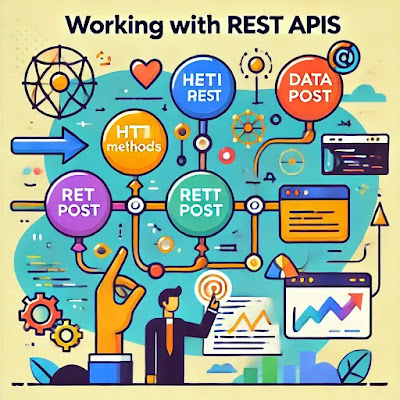Using Media Queries to Build Responsive Websites
Using Media Queries to Build Responsive Websites
As the variety of devices that access the internet continues to grow, web developers are increasingly challenged to create websites that work flawlessly across different screen sizes. From large desktop monitors to small smartphone screens, users expect websites to look good and function smoothly. This is where responsive web design comes in, and at the heart of it are media queries.
Media queries allow developers to apply different styles based on the characteristics of the device or browser window, such as its width, height, resolution, or orientation. By using media queries, you can ensure that your website looks great and functions well, regardless of the device it’s being viewed on.
What Are Media Queries?
Media queries are a CSS technique introduced in CSS3 that enables developers to apply specific styles to different devices or viewport sizes. Media queries work by querying the media type (e.g., screen, print) and applying CSS rules conditionally based on those criteria.
A basic media query looks like this:
@media only screen and (max-width: 768px) {
body {
background-color: lightblue;
}
}In this example, the background color of the <body> element will change to light blue only when the viewport width is less than or equal to 768 pixels. This ensures that the style applies to mobile devices or tablets.
Why Responsive Design Matters
Responsive design is crucial because it allows your website to adapt to different screen sizes without sacrificing functionality or aesthetics. Here's why it matters:
- Improved User Experience: Users can easily navigate your website regardless of the device they’re using.
- Better SEO: Google prioritizes mobile-friendly websites in search results, improving your site’s visibility.
- Cost-Effective: Instead of creating separate websites for different devices, a responsive website adapts to all devices, saving time and resources.
How Media Queries Work
Media queries allow you to create responsive designs by specifying certain conditions under which certain styles will apply. The most common use case is to apply different styles based on the width of the viewport. For example, you may want a different layout for desktop and mobile users.
Here’s an example of a media query targeting different screen widths:
/* For devices with a width of 1024px and up (typically desktops) */
@media (min-width: 1024px) {
.container {
width: 960px;
}
}
/* For tablets with a width between 768px and 1023px */
@media (min-width: 768px) and (max-width: 1023px) {
.container {
width: 720px;
}
}
/* For smartphones with a width of 767px or less */
@media (max-width: 767px) {
.container {
width: 100%;
}
}Common Media Query Breakpoints
When working with media queries, it’s helpful to use common breakpoints that correspond to standard device sizes. Here are a few common breakpoints:
- 1200px and up: Large screens such as desktops.
- 992px to 1199px: Laptops and tablets in landscape mode.
- 768px to 991px: Tablets and smaller screens.
- 480px to 767px: Smartphones in portrait mode.
- Below 480px: Very small devices such as older smartphones.
Building a Responsive Layout Using Media Queries
Let’s walk through building a simple responsive layout using media queries. We'll create a basic two-column layout that adjusts based on the device width. For larger screens, the layout will have two columns, and for smaller screens, the layout will stack into a single column.
Step 1: Set up the HTML Structure
<div class="container">
<div class="column">Column 1</div>
<div class="column">Column 2</div>
</div>Step 2: Add CSS for the Layout
.container {
display: flex;
flex-wrap: wrap;
}
.column {
flex: 1;
padding: 10px;
}
/* Media query for small screens */
@media (max-width: 768px) {
.column {
flex: 100%;
}
}In this example, the two columns will sit side by side on larger screens, but will stack on top of each other on screens smaller than 768 pixels. This creates a fluid, responsive layout that adapts to different screen sizes.
Advanced Media Query Features
While basic media queries based on width are the most common, there are several other features you can use to create even more responsive designs. Some examples include:
- Orientation: You can target portrait or landscape modes.
@media (orientation: landscape) - Resolution: For high-resolution displays like retina screens.
@media only screen and (min-resolution: 2dppx) - Aspect Ratio: For screens with specific aspect ratios.
@media (min-aspect-ratio: 16/9)
Best Practices for Using Media Queries
Here are a few best practices to keep in mind when using media queries to ensure your website remains responsive and easy to maintain:
- Start with Mobile First: Design your website for small screens first, then add more complex layouts for larger screens.
- Use Relative Units: Instead of using fixed units like pixels, use percentages or rem units to ensure better scalability.
- Optimize for Performance: Keep your media queries organized and avoid excessive use of multiple media queries on the same elements, as it can slow down your website.
- Test Across Devices: Always test your design on different devices and screen sizes to ensure it works as intended.
Conclusion
Media queries are a powerful tool that enable web developers to create responsive websites that look and function well on any device. By understanding the basics of media queries and following best practices, you can build web applications that provide an optimal experience for all users, regardless of screen size.
Whether you are a beginner or an experienced web developer, mastering media queries is essential in today’s world of multi-device internet access. Start implementing media queries in your next project and ensure that your website stands out by being flexible, adaptable, and fully responsive.



Comments
Post a Comment